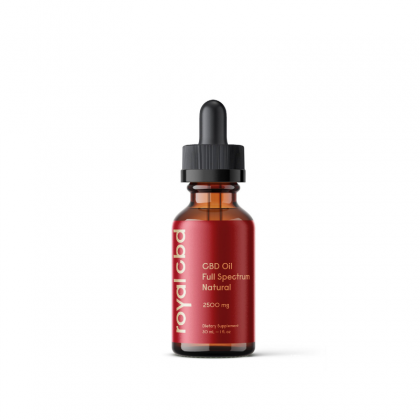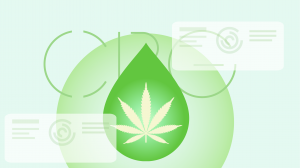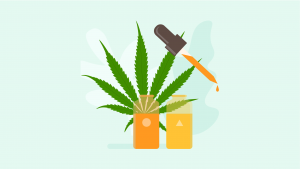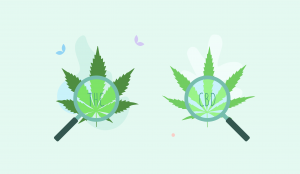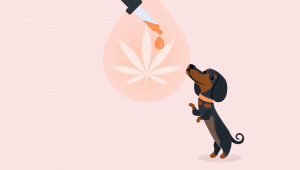| Total CBD: | 500 – 2500 mg |
| Potency: | 16.6 - 83.3 mg/mL |
| Cost per mg CBD: | $0.12 – $0.18 |
| Extract Type: | Full-spectrum |
| THC Content: | <0.3% |

Evidence based
CBD for Stroke Patients: Can Hemp Oil Help Recovering Victims?
CBD protects the neurons & improves blood flow to the brain.
Recent research suggests CBD oil may be able to reduce damage & support recovery after a stroke.
Learn about the benefits & limitations of CBD oil for stroke victims.
Strokes are the third leading cause of death in the United States and a significant source of neurological and physical debilitation.
Some stroke survivors fully recover, while others are left unable to talk, walk, or care for themselves.
This is a major cause of a decreased quality of life.
There are few treatments available after someone has suffered from a stroke, but recent studies have shown that CBD oil may offer benefits to people suffering from this condition.
Here, we discuss how CBD can help stroke victims and offer a few of the best CBD oils on the market for people suffering from the debilitating side effects of a stroke.
Can CBD Oil Support Stroke Patients?
In recent years, the public and academic interest in cannabis and its chief non-psychoactive cannabinoid, CBD, has grown substantially.
There are thousands of research studies published on the compound this year alone.
Many of these studies involve neurological function, and we are starting to develop a better understanding of how the compound works in the brain, and how we can use it to support people suffering from conditions such as strokes.
One of the main findings involves the protective effect CBD offers the brain.
The benefits of CBD oil for strokes include:
- Protects the brain cells
- Resists oxidative damage in the brain
- Improves blood flow to the brain
- Reduces high blood pressure
- Reduces glutamate toxicity
- Promotes faster recovery of damaged neurons after a stroke
1. Protects Brain Cells
Damaged neurons are the cause of the side effects of a stroke.
When the neurons are unable to get the oxygen and nutrients they need, they become damaged and may die off, leaving us with lasting neurological damage.
One of the critical areas of focus when supporting stroke patients is to work on the overall health of the neurons.
CBD is especially useful for neuron health.
CBD improves neuron health by supporting something called calcium ion handling (necessary for nerves to send electrical impulses), and neuron metabolism (how the neurons generate energy to survive).
We’ll discuss exactly how this works in more detail below.
2. Resists Oxidative Damage
All of our cells need oxygen and a source of energy to survive.
As soon as blood flow is cut off from a cell, it becomes sick.
In the absence of oxygen, the cell produces toxic metabolic byproducts as it tries to continue doing its job. If these toxic compounds build up for too long (2-3 minutes), they can cause the cells to die.
These metabolic compounds are often referred to as free radicals. They’re unstable compounds that tear apart our cell structures as they try to stabilize themselves.
Our body uses something called antioxidants to take the hit for us, stabilizing these free radical compounds and preventing them from causing damage to the body.
Oxidative damage is the key feature for lasting stroke damage and is one of the main areas of treatment.
CBD and full-spectrum hemp extracts have high concentrations of antioxidants that help protect neurons from damage when toxic compounds build up.

3. Improves Blood Flow to the Brain
Since ischemic strokes are caused by poor blood flow, it makes perfect sense to improve blood flow to the brain to prevent further damage.
CBD improves blood flow to the brain through its terpene content.
Terpenes are the volatile compounds contained in plants, responsible for the flavor and aroma.
Terpenes also have a wide range of therapeutic benefits, including improved cerebral blood flow.
Some examples of cannabis terpenes with proven benefits regarding cerebral blood flow include:
Even CBD is proven to increase cerebral blood flow through its modulating effects on serotonin receptors, which play a critical role in regulating the amount of blood that enters the brain [9].
In order to get the most benefit on cerebral blood flow, it’s important to note that the CBD oil used in clinical trials are full-spectrum extracts containing all these critical terpenes.
CBD isolates aren’t likely to have any of these terpenes and therefore won’t provide the same level of benefit.
4. Reduces High Blood Pressure
High blood pressure is one of the primary causes of stroke.
Consistently high blood pressure can dramatically increase the chances of having another stroke. For this reason, many doctors choose to treat blood pressure as one of the primary preventions for another stroke.
A randomized clinical trial found that a 600 mg dose of CBD was able to reduce resting blood pressure scores by 6 mmHg [10].
5. Reduces Glutamate Toxicity
CBD was shown to protect against N-methyl-D-aspartate and beta-amyloid peptide toxicity [1].
What does this mean?
It suggests that CBD can protect the neurons from age-related damage and has the potential to prevent strokes brought on by age-related cognitive decline.
Another study looked at the effects of ischemic injury (lack of oxygen) in gerbils treated with CBD. All of the animals given CBD showed significantly less permanent damage than animals not given CBD [2].
This highlights the potent neuroprotective effect offered by CBD in relation to stroke damage.
CBD was found in a number of studies to offer antioxidant support, including hydroperoxide toxicity in the neurons [3].
What Is A Stroke?
A stroke is a result of blocked blood flow to various parts of the brain. When this happens, essential nutrients and oxygen can’t make it to the delicate cells of the brain, which potentially results in severe damage.
If this happens for just a few minutes, the cells in the brain start to die and can cause long-term problems. This condition is a medical emergency and often fatal.
If blood flow is restored fast enough, you can avoid lasting damage.
However, it can take several months for a patient to recover from a stroke.

There Are 2 Types of Strokes:
1. Ischemic Stroke
An ischemic stroke is the most common form of a stroke and is the most survivable.
An ischemic stroke occurs when blood flow is cut off from regions in the brain. It can happen if a blood or cholesterol clot gets lodged in the cerebral arteries feeding the brain. Once the artery is blocked, blood cannot flow to the region it supplies.
Within about two or three minutes, the neurons suffocate and die. This cell death is permanent; neurons do not grow back.
The side effects may be different depending on which region of the brain is affected.
As an example, if regions of the brain associated with speech are affected, you may lose your ability to communicate.
Causes of Ischemic Stroke:
- Being overweight
- Heavy drinking
- Physical inactivity
- Drug use
- Atrial fibrillation
- Smoking
- Obstructive sleep apnea
- High cholesterol
- Diabetes
- High blood pressure
- Cardiovascular disease
2. Hemorrhagic Stroke
Hemorrhagic strokes are much more serious.
This type of stroke involves a burst blood vessel in the brain. These strokes are almost always fatal.
As blood leaks out from the burst artery, it isn’t able to reach the cells it feeds, causing them to die.
Causes of a Hemorrhagic Stroke:
- Smoking
- High blood pressure
- Blood-thinner medications
- Aneurysms (weak spots in arterial walls)
Signs & Symptoms Of A Stroke
There are a few key symptoms and side effects of a stroke that are important to keep in mind.
Symptoms During The Stroke:
While a stroke is happening, some key indicators tend to appear:
- Difficulty speaking
- Difficulty understanding people
- Weakness, usually on one side of the body
- Severe headaches
- Vision disturbances
- Paralysis in the face, arms, or legs
- Difficulty walking
Symptoms After The Stroke:
There may be some lasting side effects after the stroke.
Many people report the following side effects after a stroke:
- Weakness on one side of the body
- Nerve pain
- Difficulty swallowing
- Difficulty speaking
- Numbness or tingling sensations in the limbs
- Memory loss
- Changes in behavior and self-care ability
- Depression
Care and Treatment After The Stroke:
Treatment depends on the severity and cause of the stroke. The chances for another stroke increase significantly, so reducing this risk is a necessary part of post-care.
- Physical, occupational, and speech therapy
- Healthy lifestyle changes
- Medications to control underlying causes of strokes such as high blood pressure, high cholesterol, and diabetes
- Surgery
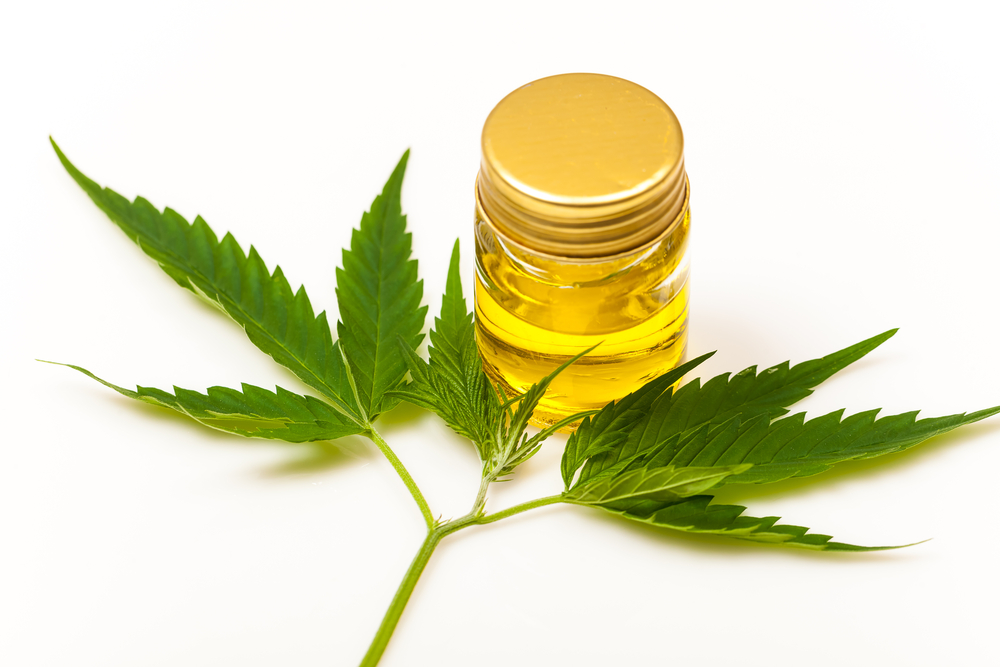
What Are The Best Products For Strokes?
CBD offers a few excellent benefits that may reduce side effects after a stroke.
It’s also useful for reducing the chances of having another stroke in the future and protects against a lot of the damage that occurs during a stroke event. However, it’s important to talk to your doctor first, since CBD can interact with some medications.
The best CBD oils for treating stroke are products with a high CBD concentration, small amounts of THC, and a full-spectrum of terpenes and other phytochemicals.
CBD isolates should be avoided in people who have recently suffered from a stroke because they won’t be nearly as effective as full-spectrum options.
We recommend using full-spectrum high-quality hemp oil.
These products are made using high-quality ingredients free from pesticides, and contaminants. Unnecessary chemical compounds such as solvents or pesticides may aggravate stroke symptoms and are therefore best to avoid.
Measuring Neurological Damage After A Stroke
There are two markers scientists use to determine neuron health:
- Calcium ion handling
- Metabolic activity
These two metrics are reliable measures for the health of the nervous system.
The first one, calcium ion handling, refers to how well the neurons can move calcium atoms in and out of the neuron. This function allows neurons to pass electrical signals down from one end of the nerve to the other.
When calcium ions aren’t functioning as well as they should, the nerves are unable to send signals to other parts of the brain as easily. This is a red flag indicating the neurons are starting to degrade.
This is a key issue with people after surviving a stroke [5].
CBD offers direct benefits to calcium handling in neurons and controls the rate of cell death (apoptosis) by restoring damaged neurons to push them back to a better state of health [4].
The second measurement of neuron health, metabolic activity, is also a key issue that may develop following a stroke. After brain scans of people following a stroke, it’s common to see areas of the brain with low or completely absent metabolic activity [6].
It’s the absence of metabolic activity that causes many side effects of the stroke, such as weakness, fatigue, confusion, or loss of bladder/bowel control.

Using CBD for Strokes
Although more research is needed to better understand precisely how CBD oil benefits stroke victims, there’s a lot of evidence to support its potential as a preventative and post-event treatment.
Most of the studies quoted in this article suggest using about 400 – 600 mg of CBD equivalent each day.
This is best done with a full-spectrum CBD oil to get the advantages of the other cannabinoids and terpenes.
It’s also important to mention that in order to get the most out of your CBD oil, you need to take it regularly for long periods. Most people who take CBD oil after a stroke take it every day without fail.
The benefits it’s going to provide are diverse. Some are felt immediately; others require a few weeks of regular treatment to start to appear.
It’s also recommended that you quit smoking, take measures to lower your stress, and add gentle exercise into your daily routine to further improve your odds of recovering or avoiding future strokes.
References Cited In This Article
- Iuvone, T., Esposito, G., Esposito, R., Santamaria, R., Di Rosa, M., & Izzo, A. A. (2004). Neuroprotective effect of cannabidiol, a non‐psychoactive component from Cannabis sativa, on β‐amyloid‐induced toxicity in PC12 cells. Journal of Neurochemistry, 89(1), 134-141.
- Braida, D., Pegorini, S., Arcidiacono, M. V., Consalez, G. G., Croci, L., & Sala, M. (2003). Post-ischemic treatment with cannabidiol prevents electroencephalographic flattening, hyperlocomotion and neuronal injury in gerbils. Neuroscience letters, 346(1-2), 61-64.
- Hampson, A. J., Grimaldi, M., Lolic, M., Wink, D., Rosenthal, R., & Axelrod, J. (2000). Neuroprotective Antioxidants from Marijuana a. Annals of the New York Academy of Sciences, 899(1), 274-282.
- Ryan, D., Drysdale, A. J., Lafourcade, C., Pertwee, R. G., & Platt, B. (2009). Cannabidiol targets mitochondria to regulate intracellular Ca2+ levels. Journal of Neuroscience, 29(7), 2053-2063.
- Sato, Y., Kaji, M., Honda, Y., Hayashida, N., Iwamoto, J., Kanoko, T., & Satoh, K. (2004). Abnormal calcium homeostasis in disabled stroke patients with low 25-hydroxyvitamin D. Bone, 34(4), 710-715.
- Juergens, U. R., Stöber, M., Schmidt-Schilling, L., Kleuver, T., & Vetter, H. (1998). Anti-inflammatory effects of eucalyptol (1.8-cineole) in bronchial asthma: inhibition of arachidonic acid metabolism in human blood monocytes ex vivo. European Journal of Medical Research, 3(9), 407-412.
- Lin, W. Y., Kuo, Y. H., Chang, Y. L., Teng, C. M., Wang, E. C., Ishikawa, T., & Chen, I. S. (2003). Anti-platelet aggregation and chemical constituents from the rhizome of Gynura japonica. Planta Medica, 69(08), 757-764.
- Li, Y. H., Sun, X. P., Zhang, Y. Q., & Wang, N. S. (2008). The antithrombotic effect of borneol related to its anticoagulant property. The American Journal of Chinese Medicine, 36(04), 719-727.
- Mishima, K., Hayakawa, K., Abe, K., Ikeda, T., Egashira, N., Iwasaki, K., & Fujiwara, M. (2005). Cannabidiol Prevents Cerebral Infarction Via a Serotonergic 5-Hydroxytryptamine1A Receptor-Dependent Mechanism. Stroke, 36(5), 1071-1076.
- Jadoon, K. A., Tan, G. D., & O’Sullivan, S. E. (2017). A single dose of cannabidiol reduces blood pressure in healthy volunteers in a randomized crossover study. JCI insight, 2(12).
More Health Benefits to Explore
-
Conditions Related to Health Benefits
- CBD For Allergies: Can This Cannabinoid Ease Symptoms?
- Top 10 CBD Oils For Back Pain
- Can CBD Help With Menstrual Cramps?
- CBD for Sciatica: How It Works, Safety, Drug Interactions, & Best Products
- Is CBD a Viable Treatment for Cerebral Palsy?
- CBD Oil For Sleep
- CBD For Psoriasis: Can CBD Help to Alleviate Symptoms?
- Traumatic Brain Injury (TBI)
- Arthritis
- Anxiety & Depression
- Weight Loss
- ADD & ADHD
- Anorexia
- Alzheimer’s Disease & Dementia
- Addiction
- ALS (Amyotrophic Lateral Sclerosis)
- Antibiotic Resistance
- Asthma
- Atherosclerosis
- Autism
- Acne
- Bipolar Disorder
- Pain
- Crohn's Disease & Ulcerative Colitis
- Diabetes
- Epilepsy
- Endocrine Disorders
- Fibromyalgia
- Fatty Liver Disease
- Glaucoma
- Hypertension
- Heart Disease
- Huntington's Disease
- Inflammation
- Irritable Bowel Syndrome (IBS)
- Kidney Disease
- Migraine Headaches
- Muscle Recovery
- Multiple Sclerosis
- Motion Sickness
- Metabolic Syndrome
- Neurodegeneration
- Cancer
- Nausea
- Neuropathic (Nerve) Pain
- Osteoporosis/Bone Health
- Obsessive-Compulsive Disorder (OCD)
- Polycystic Ovarian Syndrome (PCOS)
- PTSD
- Prion/Mad Cow Disease
- Premenstrual Syndrome (PMS)
- Parkinson’s Disease
- Schizophrenia
- Sickle Cell Anemia
- Stroke
-
Conditions Related to Products
- Ranking The Top 13 THC Gummies By Category (Δ8, Δ9, Δ10, HHC, & More)
- Top 10 CBD Oils For Back Pain
- Everything You Need to Know About CBD Sunscreen
- Top 7 CBD Gummies For Sleep & Insomnia
- Top 7 CBD Gummies To Help With Anxiety (2022)
- Best CBD Gummies For Pain (Top-Rated Pain Gummies For 2022)
- Best Hemp Cigarettes (Top 5 Nicotine-Free Smokes)
- Top 5 CBD Lip Balms For 2022
- The Top 7 CBD Face Masks for 2022
- The Best CBD Inhalers For 2022 (& How to Use Them)
- Best Full-Spectrum CBD Vape Juice: What to Look For & How to Use It
- CBD Eye Drops: New Option For Glaucoma?
- CBD Oil For Dogs With Arthritis
- Best CBD Massage Oils In 2022
- Buyer's Guide To The Best CBD Vape Kits In 2022
- CBD Chocolate: Yes, It Exists & It's Just as Divine as it Sounds
- CBD Pre-Rolls & Cigarettes
- Terpene Concentrates
- Best CBD Soaps
- Best CBD Shampoo & Conditioner
- Best CBD Juul Pods
- CBD Isolate Oils
- Full-Spectrum CBD Oils
- Best CBD Lube
- CBD Honey
- CBD Transdermal Patches
- Best Dry Herb Vaporizers
- CBD Oil For Dogs With Epilepsy
- CBD Oil For Dogs With Anxiety
- CBD Oil For Dogs With Cancer
- CBD For Horses
- CBD Chewing Gum
- CBD Pain Cream
- CBD Oil For Cats
- CBD Oil For Dogs
- CBD Hemp Flower
- CBD Suppositories
- Best CBD Gummies for Pain, Sleep & Anxiety Reviewed (2022)
- CBD Teas
- CBD Vape Pens
- CBD Vape Oils
- CBD Coffee
- CBD Drinks & Shots
- CBD Crystals
- CBD Skincare
- Best CBD Oil & Gummies For Kids: Is CBD Safe for Children with Anxiety & ADHD?
- CBD Concentrates
- CBD Bath Bombs
- CBD Capsules
- CBD Sprays
- CBD Dog Treats
-
Conditions Related to Topicals
-
Conditions Related to Oils & Tinctures
-
Conditions Related to Edibles
- Top 7 CBD Gummies To Help With Anxiety (2022)
- Best CBD Gummies For Pain (Top-Rated Pain Gummies For 2022)
- CBD Chocolate: Yes, It Exists & It's Just as Divine as it Sounds
- CBD Honey
- CBD Chewing Gum
- Best CBD Gummies for Pain, Sleep & Anxiety Reviewed (2022)
- CBD Teas
- CBD Coffee
- CBD Drinks & Shots
- CBD Capsules
-
Conditions Related to Gummies
- Ranking The Top 13 THC Gummies By Category (Δ8, Δ9, Δ10, HHC, & More)
- Top 7 CBD Gummies For Sleep & Insomnia
- Top 7 CBD Gummies To Help With Anxiety (2022)
- Best CBD Gummies For Pain (Top-Rated Pain Gummies For 2022)
- Best CBD Gummies for Pain, Sleep & Anxiety Reviewed (2022)
- Best CBD Oil & Gummies For Kids: Is CBD Safe for Children with Anxiety & ADHD?
-
Conditions Related to Hemp Flower
-
-
Conditions Related to Terpenes
-
-
Conditions Related to Cultivation
-
Conditions Related to Concentrates
-
Conditions Related to Delta 8 THC
-
Conditions Related to Delta 9 THC
-
-
-
-
Conditions Related to CBD
- Everything You Need to Know About CBD Sunscreen
- Top 7 CBD Gummies For Sleep & Insomnia
- Top 7 CBD Gummies To Help With Anxiety (2022)
- Best CBD Gummies For Pain (Top-Rated Pain Gummies For 2022)
- Best Hemp Cigarettes (Top 5 Nicotine-Free Smokes)
- Top 5 CBD Lip Balms For 2022
- The Top 7 CBD Face Masks for 2022
- The Best CBD Inhalers For 2022 (& How to Use Them)
- Best Full-Spectrum CBD Vape Juice: What to Look For & How to Use It
- CBD Eye Drops: New Option For Glaucoma?
- CBD Oil For Dogs With Arthritis
- Best CBD Massage Oils In 2022
- Buyer's Guide To The Best CBD Vape Kits In 2022
- CBD Chocolate: Yes, It Exists & It's Just as Divine as it Sounds
- CBD Pre-Rolls & Cigarettes
- Best CBD Soaps
- Best CBD Shampoo & Conditioner
- Best CBD Juul Pods
- CBD Isolate Oils
- Full-Spectrum CBD Oils
- Best CBD Lube
- CBD Honey
- CBD Transdermal Patches
- CBD Oil For Dogs With Epilepsy
- CBD Oil For Dogs With Anxiety
- CBD Oil For Dogs With Cancer
- CBD For Horses
- CBD Chewing Gum
- CBD Pain Cream
- CBD Oil For Cats
- CBD Oil For Dogs
- CBD Hemp Flower
- CBD Suppositories
- Best CBD Gummies for Pain, Sleep & Anxiety Reviewed (2022)
- CBD Teas
- CBD Vape Pens
- CBD Vape Oils
- CBD Coffee
- CBD Drinks & Shots
- CBD Crystals
- CBD Skincare
- Best CBD Oil & Gummies For Kids: Is CBD Safe for Children with Anxiety & ADHD?
- CBD Concentrates
- CBD Bath Bombs
- CBD Capsules
- CBD Sprays
- CBD Dog Treats
-
-
Conditions Related to THC-O
-
-
Conditions Related to Joint Health
-
Conditions Related to Pain Disorders
- Top 10 CBD Oils For Back Pain
- Can CBD Help With Menstrual Cramps?
- CBD for Sciatica: How It Works, Safety, Drug Interactions, & Best Products
- Traumatic Brain Injury (TBI)
- Arthritis
- Pain
- Fibromyalgia
- Glaucoma
- Inflammation
- Kidney Disease
- Migraine Headaches
- Multiple Sclerosis
- Neuropathic (Nerve) Pain
- Premenstrual Syndrome (PMS)
- Sickle Cell Anemia
-
Conditions Related to Autoimmune Disease
-
Conditions Related to Cognitive Health
-
Conditions Related to Metabolic Disorders
-
Conditions Related to Psychological Disorders
-
Conditions Related to Muscles & Bones
-
Conditions Related to Nervous System
- CBD for Sciatica: How It Works, Safety, Drug Interactions, & Best Products
- Is CBD a Viable Treatment for Cerebral Palsy?
- CBD Oil For Sleep
- Traumatic Brain Injury (TBI)
- Anxiety & Depression
- ADD & ADHD
- Anorexia
- Alzheimer’s Disease & Dementia
- Addiction
- ALS (Amyotrophic Lateral Sclerosis)
- Autism
- Bipolar Disorder
- Epilepsy
- Huntington's Disease
- Inflammation
- Migraine Headaches
- Multiple Sclerosis
- Motion Sickness
- Neurodegeneration
- Neuropathic (Nerve) Pain
- Obsessive-Compulsive Disorder (OCD)
- PTSD
- Prion/Mad Cow Disease
- Parkinson’s Disease
- Schizophrenia
-
-
Conditions Related to Reproductive Health
-
Conditions Related to Hormones & Endocrine
-
Conditions Related to Skin Health
-
Conditions Related to Cardiovascular System
-
Conditions Related to Digestive System
-
Conditions Related to Genetic Disorders
-
Conditions Related to For Children


